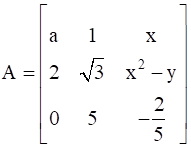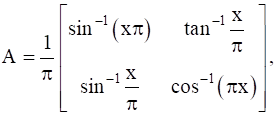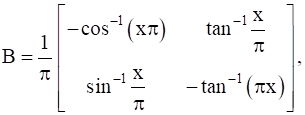Solution of Chapter 3. Matrices (Mathematics - Exemplar Book)
Exercise
13
Find A, if  .
.
24
If  , find A.
, find A.









































































